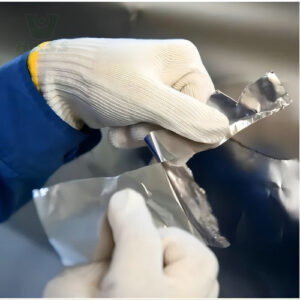
Call Us Today! +86-13761906384
Call Us Today! +86-13761906384
The 300 series is the largest and most commercially significant family of stainless steels. As the core group within the austenitic family, all 300 series grades share a foundation of chromium (approx. 18-30%) and nickel (approx. 6-20%), making them the workhorse material for industries worldwide.
From the ubiquitous 304 to the highly specialized 310S, Huaxiao Metal supplies a comprehensive range of 300 series stainless steel products. This guide is designed to help you compare the grades and make an informed decision.
Shapes: Sheet, Strip, coils, tube, foils, etc.
Surface: No.1, 2D, 2B, BA, HL, NO.4, Mirror, SB, Embossed, Etched, etc.
If you want to buy 300 series stainless steel products, please contact the right stainless steel supplier – Huaxiao Metal provides you with the latest series stainless steel prices.
While each grade has unique properties, all 300 series stainless steels share a common set of powerful characteristics derived from their austenitic microstructure.
Foundation of Chromium-Nickel Alloy: This core composition provides excellent overall corrosion resistance.
Non-Magnetic in Annealed State: Ideal for applications where magnetic interference is a concern.
Cannot Be Hardened by Heat Treatment: Their strength is increased through cold working, which also enhances their magnetic response.
Excellent Weldability & Formability: They can be easily welded, bent, and formed into complex shapes.
Exceptional Cryogenic Performance: They retain their strength and toughness at very low temperatures.
The chart below shows the chemical composition of the most common 300 series stainless steels used in the metal hose industry. Single figures signify the maximum percentage allowable under ASTM 240 requirements.
| Grades | Cr | Ni | C | Mn | Si | P | S | Mo |
|---|---|---|---|---|---|---|---|---|
| 301 | 16-18% | 6-8% | ≤0.15% | ≤2.0% | ≤1.0% | ≤0.045% | ≤0.03% | – |
| 304 | 18-20% | 8-12% | ≤0.08% | ≤2.0% | ≤0.75% | ≤0.045% | ≤0.03% | – |
| 304L | 18-20% | 8-12% | ≤0.03% | ≤2.0% | ≤0.75% | ≤0.045% | ≤0.03% | – |
| 316 | 16-18% | 10-14% | ≤0.08% | ≤2.0% | ≤0.75% | ≤0.045% | ≤0.03% | 2-3% |
| 316L | 16-18% | 10-14% | ≤0.03% | ≤2.0% | ≤0.75% | ≤0.045% | ≤0.03% | 2-3% |
| 309 | 22-24% | 12-15% | ≤0.20% | ≤2.0% | ≤1.0% | ≤0.045% | ≤0.03% | – |
| Grades | Density | Melting Point (°C) | Tensile Strength (MPa) | Elongation (%) | Hardness (Rockwell) |
|---|---|---|---|---|---|
| 301 | 7.9 g/cm³ | 1400-1450 | 515 | 40 | 85 |
| 304 | 7.9 g/cm³ | 1400-1450 | 485 | 50 | 85 |
| 304L | 7.9 g/cm³ | 1400-1450 | 485 | 50 | 85 |
| 316 | 7.9 g/cm³ | 1371-1400 | 485 | 55 | 93 |
| 316L | 7.9 g/cm³ | 1371-1400 | 485 | 55 | 93 |
| 309 | 8.0 g/cm³ | 1400-1450 | 520 | 40 | 88 |

Navigating the nuances of the 300 series is our expertise. Partnering with Huaxiao Metal means you get more than just a supplier.
Extensive Inventory: We maintain a large stock of 300 series stainless steel in sheet, plate, coil, pipe, and bar forms to ensure fast delivery times.
Uncompromising Quality: Every product is sourced from reputable mills and is delivered with a Mill Test Certificate (MTC) to guarantee compliance with international standards like ASTM/ASME.
Custom Processing Services: We provide value-added services including precision slitting, cut-to-length, and various surface finishes (No.1, 2B, BA, No.4, 8K Mirror) to meet your project’s exact needs.
Stainless steel is divided into different series; the 300 series and the 400 series are two common series, each with different characteristics and application areas. The following is a simple comparison of these two series of stainless steel:
300 series (austenitic type)
400 series (ferritic or martensitic type)
300 series:
400 Series:
The “L” stands for “Low Carbon.” L-grades have a maximum carbon content of 0.03%, which minimizes harmful carbide precipitation during welding. This makes them the preferred choice for welded components that will be used in corrosive environments without post-weld annealing.
For high-temperature resistance, Grades 309S and 310S are the superior choices. Their higher chromium and nickel content provides excellent strength and resistance to oxidation at elevated temperatures, far surpassing 304 or 316.
300 Series Stainless Steel: The Ultimate Guide for Industrial Applications
The choice depends entirely on the environment. For most applications with exposure to freshwater or general atmospheric conditions, 304 is perfectly adequate and more cost-effective. If your application involves exposure to saltwater, de-icing salts, or aggressive chemical solutions (chlorides), 316 is essential to prevent pitting corrosion.
304 vs 316 Stainless Steel
Don’t let material selection be a point of failure. Contact Huaxiao Metal for reliable supply, expert advice, and competitive pricing on all 300 series stainless steel products.
Fill out the form below, and we will be in touch shortly.